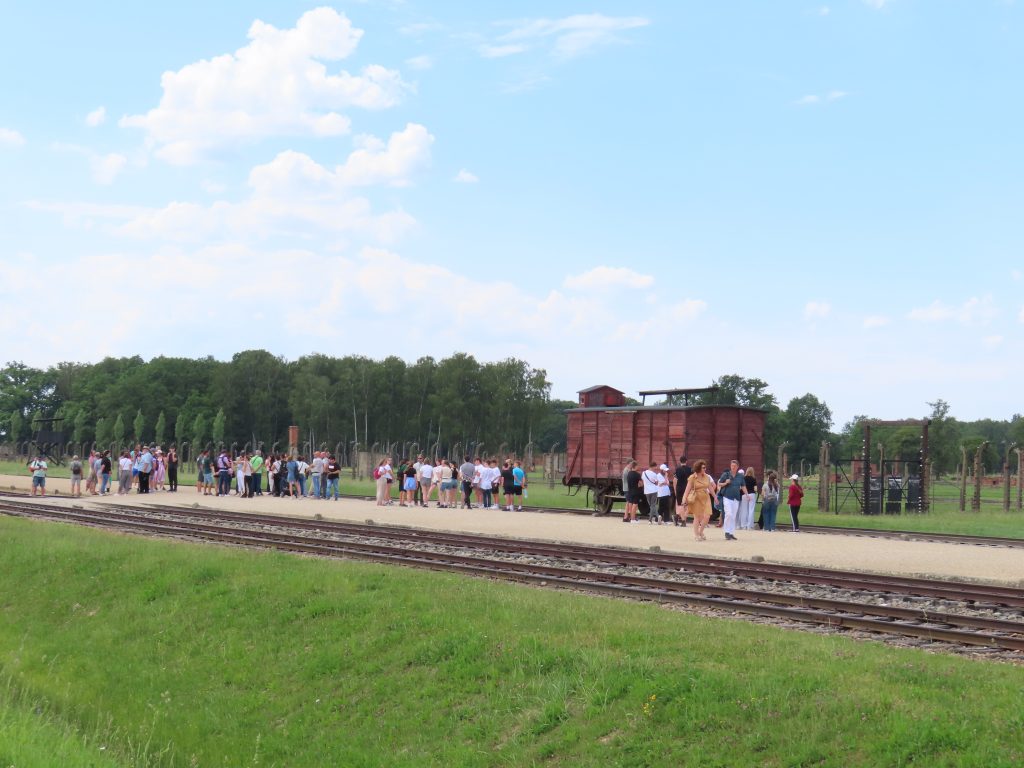It would be almost impossible to talk about Holocaust memorialization and visitor attitudes without talking about Auschwitz-Birkenau Memorial and Museum. It is hard to describe the emotional toll this space exudes, and while I always feel a little redundant when I say that I really hated being in this space, I was not expecting the visceral emotional reaction that I had. It was like my body reacted in isolation from my mind and even though I knew that this place did not pose me any danger, my body wanted to get me out of the space as fast as possible. This was something I had never experienced before, and even after a week in Berlin and having some level of preparation before coming to this site, I was completely overwhelmed.

While I was waiting within the grounds of Auschwitz I, I observed the hundreds of other visitors at this site and wondered how I could ever judge them for their actions. The majority of the visitors that I saw were teenagers on school trips, and I was left wondering just how much they knew before coming to this site. I was struck by a memory I have of a history school trip I took in high school. Some of the students were in grade 8, and at that point in the Social Studies curriculum, they had not learned about World War Two yet. So here we are, outside of Amsterdam, at a Canadian Military Cemetery, and these children, who were not prepared in any way for what they were going to experience, just broke down. So then I look back to these students there at Auschwitz, a site that made me, a well informed academic breakdown, and I can’t imagine what they must be feeling. So when I see some teenagers fooling around with their friends, I don’t think of it as disrespectful, I think of it as a way of coping with this traumatic space.

